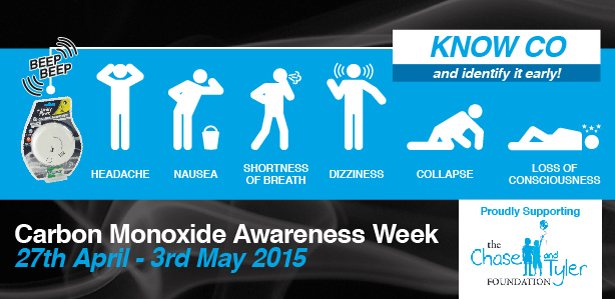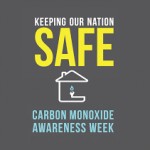Carbon monoxide – what is it?
Carbon monoxide is a tasteless, odourless, invisible gas. It’s also deadly. Because of its silent and undetectable nature, carbon monoxide poisoning is prevalent and costs lives. Symptoms of carbon monoxide poisoning include headaches, dizziness, nausea, confusion and weakness. Long-term exposure of a low level, or short-term exposure of a high level can lead to shortness of breath, loss of consciousness and death.

In Autumn of 2010, Vanessa Robinson woke to her worst nightmare. The wall-mounted gas heater had been humming away on low to provide warmth to the house. However, the appliance in the rental property was slowly filling their home with deadly carbon monoxide gas. Her two sons, Chase (eight) and Tyler (six) passed away during the night. Vanessa, severely sick and injured from the prolonged exposure was initially treated as a criminal and not given proper medical assessment or treatment.
The general knowledge and information available about carbon monoxide and its effects are limited, especially in Australia. It’s a major task to educate people who are not aware or actively seeking the subject. Vanessa had the courage to stand and actively teach people about the dangers concerning their appliances. The Chase and Tyler Foundation now runs awareness campaigns and spearhead the Carbon Monoxide Awareness Week which runs between the 27th of April to the 3rd of May.
What can you do to prevent carbon monoxide poisoning?
Check the pilot light of your gas appliances. The pilot light should produce a blue flame. If the flame is yellow or red, turn off the appliance and contact the manufacturer or a licensed gas-fitter. Do not use the appliance until the fault has been fixed.
Shut off all appliances before leaving the home or while sleeping.
Do not use outdoor gas appliances indoors, such as your BBQ or a heating device.
Who should you talk to about carbon monoxide?

A licensed and qualified gas-fitter should perform the following actions for you:
- Pull apart and clean the appliance thoroughly.
- Check the integrity of the flue.
- Check the ventilation, connections and clearance.
- Assess any possible damage to the appliance and any work that may need to be undertaken.
- Use a carbon monoxide analyser to detect the presence of gas once work has been completed.
- Supply you with a compliance certificate once work has been completed.
- Don’t let carbon monoxide go undetected in your home. Take the necessary precautions and protect your family first.